
- Global Standard
- How does it work?
- Making a difference
- Get involved
- IUCN Green List Exchange
- Tech4Nature Partnership
- News and Events
- Vital Sites: Journey to Marseille

Tour du Valat Estate Propriétés de la Tour du Valat
Why is it green listed.
The Tour du Valat Estate covers a total area of 2649 ha in two different geographical areas located in the Camargue: – The Tour du Valat Estate itself, near the village of Le Sambuc (city of Arles, Bouches-du-Rhône), covers 2548 ha, including 1845 ha listed as a regional nature reserve, 715 ha of agricultural parcels and buildings, the Verdier marshes (find out more), the Petit Badon Estate, and the Commanderie dunes; – The Petit Saint-Jean Estate, situated in the part of the Camargue located in the Gard Department, covers 101 ha, and is about 30 kilometers further west, near the town of Saint-Laurent-d’Aigouze
We are glad that efficient management and good state of conservation of 7 new French sites have been recognized by the Green List Program! I have no doubt they will constitute inspirational sources and new references for future applicants. Diversity and richness of habitats, species, governance systems and protection status of French Continental and Overseas territories are now well represented by those 22 Greenlisted sites. They will very soon be engaged in the creation of the Francophone Green List network and globally contribute to the international influence of the Green List
Key Achievements
Conservation
- • Natural values are in good state of conservation and the various evaluations show that the objectives have been achieved
- The Fondation Tour du Valat can count on a strong scientific community and knowledge associated to the area and working at an international level
Good governance
- Various ways of management and decision making are put in place by the Fondation Tour du Valat. Almost all IUCN Governance categories are applied.
- Local stakeholders and socio-professionals are involved in the site management. Some of those governance bodies and the overall articulation can be a source of inspiration for others.
Community benefits
- Local cultural activities such as agricultural practices, cattle farming, saltworks or hunting are maintained in some parts of the Domain
- Hydrological regulation is an important matter in the area and actions are specifically implemented in regards to the various activities concerned
Site Summary
Site Values
EAGL Evaluation Summary
Site Attributes
Conservation summary.
Outcome of EAGL Vote on Site Consensus
EAGL Summary Pillar 1: Fair Governance The governance of the entire site is properly ensured by the various governance bodies set up by the Tour du Valat Foundation, which owns the entire area, and ensuring wide consultation with all stakeholders regarding the many sites managed within the Domain. The issue of governance at the Tour du Valat was considered very interesting in that the different types of protection and management of these overlapping spaces call for distinct modes of governance. Thus, the various governance bodies seem to cover the four IUCN governance categories (A, B, C and D). The seniority of the Foundation’s actions and the cooperation with the many socio-economic actors involved in the management of the various sites generates a strong local anchorage and contribute to the sustainability of these interactions. The EAGL considers that the Tour du Valat Estate has achieved all the standards of Pillar 1 of the Green List.
Pillar 2: Robust Planning All sites owned by the Tour du Valat are registered on the WDPA. However, the scope of the Domain as a whole does not appear to correspond to a specific IUCN management category, but rather to a myriad of categories based on the management objectives of each of the sites within. The Tour du Valat Estate was therefore considered by the EAGL as a preserved area or OECM (Other Effective Conservation Measures). To date, this is the only French applicant to the Green List pre-identified as such. As the Tour du Valat is an internationally renowned research Centre, the results of monitoring, studies and research benefit to the management of the various components of the site. For example, a comprehensive review is carried out during the revision of the management plan for the regional nature reserve, which allows the reorientation of management objectives for the next 5 years. The management plans for the various sites are well developed from a global diagnosis including natural, social, economic and climatic contexts. The Tour du Valat is developing programs on climate change impacts, but knowledge has not yet been integrated into management measures as such, and will be integrated with the renewal of the various management documents. Moreover, the site’s interactions with the many socio-economic players in the sector lead the manager to take into account the pressures and changes as soon as they are identified. The EAGL considers that the Tour du Valat Estate has achieved all the standards of Pillar 2 of the Green List.
Pillar 3: Effective Management The regional nature reserve is the subject of numerous scientific monitoring on natural habitats and populations and has a battery of operational and efficient status indicators. New follow-ups with indicators are being studied on parcels of economic activity. Combined with the monitoring of adjacent natural environments already carried out, this work is very interesting for the study and coherence of activities related to the various ecosystem services provided by the Domain (hydrological regulation, livestock, agriculture, saltworks, hunting, etc.) and conservation activities of the environments and target species. Two management experiences can be quite inspiring in this regard because integrating socio-economic and cultural contexts: the agroecological project of the Domaine du Petit-Saint-Jean and the participatory management of the Marais du Verdier. The Tour du Valat Foundation has a remarkable financial, human and technical resources. Threats are included and dealt with in the various management documents. The three site management plans are based on the so-called “Open Standards” methodology, ensuring the monitoring of management operations and the assessment of the state of conservation of the main values identified. Threats to the main values of the sites are well managed and adequate responses in relation to the actors of the territory are made, even if the emergence of potential imbalances (climate change, economic crises) can bring some difficulties to reconcile the various issues in the territory. The EAGL considers that the Tour du Valat Estate has achieved all the standards of Pillar 3 of the Green List.
Pillar 4: Successful Conservation Compliance with the Open Standards methodology has demonstrated the achievement of the various objectives in terms of natural values, ecosystem services and cultural values. Although some indicators are not yet established for each site regarding ecosystem services, the methodologies deployed on Petit-Saint-Jean may be adapted and replicated at other sites. Maintaining the many socio-economic activities on the site does not appear to compromise the objectives set by the various management plans for nature protection. Some components of the Domain aim to be exemplary in agroecological field in a region where agro-pastoral activities are predominant, while ensuring the preservation of the surrounding environments, the experience of the Tour du Valat in this area is quite new and inspiring for the network of the Green List.
The EAGL considers that the Tour du Valat Estate has achieved all the standards of Pillar 4 of the Green List. Decision Following the review of the application of the Tour du Valat Estate, the EAGL welcomed the remarkable efforts of the team of managers for the conservation of the values of the site and underlined the quality and completeness of the file. On the basis of these elements, the EAGL voted unanimously in favour of the inscription of the Tour du Valat Estate on the protected areas green list. The site’s visit report is available on another platform for the reviewer and Committee anytime.
Reviewer Summary The Reviewer confirms that the Green Listing process of Le Domaine de la Tour du Valat is in compliance with the rules and procedures of the User Manual. A site visit took place after the visit schedule was approved by the Reviewer and included a visit of some of the sites of the Domaine de la Tour du Valat, as well as a consultation of relevant stakeholders. The visiting EAGL member reported to the EAGL on her visit during the EAGL meeting that was held on March 4, 2020. All needed information and documentation were shared with the EAGL members and the Reviewer prior to the EAGL meeting. The meeting, hosted by the Implementing Partner (IUCN French Committee), was attended remotely by the Site representative, their mentor and the Reviewer. During the meeting, the Site Representative and Mentor had the opportunity to present their arguments regarding the site performance level with regard to the Green List standard and its indicators, and to answer all questions from the EAGL. As for all French application processes, the Reviewer would like to highlight the efforts and time invested by the mentors to visit the site and to submit a report on the site. All MoV and site argumentation as well as the EAGL assessment outcomes and required documentation are well recorded in COMPASS (for confidentiality reasons, the site visit report will be made available to the Green List Committee through another platform). Based on their assessment, their discussion with the Site Representative and internal discussion, the EAGL decided to consider the “Domaine de la Tour du Valat” as a Conserved Area/OECM as per the IUCN definition, and after deliberation, voted unanimously for the Site nomination for the Green List. The “Domaine de la Tour du Valat” is thereby the first “OECM” (considered as such by the French EAGL) in the French jurisdiction to apply and to be nominated for the Green List. The Reviewer validates the Green List process of the “Domaine de la Tour du Valat” and submits the site to the Green List Committee for its final approval.
External Links
PANORAMA Solution
Protected Planet
Explore Country
Explore region, iucn green list protected | conserved areas.

Subscribe to our mailing list

Tour du Valat
Conservation de la nature
Gestion des Systèmes Municipaux de Déchets Solides
Une gestion efficace des systèmes de gestion des déchets municipaux nécessite une bonne compréhension des facteurs d’élimination des déchets, des quantités de déchets générés, des coûts économiques des opérations du système et des impacts environnementaux des technologies de traitement. En outre les systèmes de gestion des déchets doivent être gérés de manière globale et interdisciplinaire,… Poursuivre la lecture Gestion des Systèmes Municipaux de Déchets Solides
Recherche – gestion – conservation
Une simple protection ne suffit pas à garantir la conservation des zones humides. Il faut une gestion intégrée tenant compte des facteurs écologiques très diversifiés, de leur dynamique, des contraintes extérieures au site et des activités socio-économiques influençant leur richesse. Cette gestion est basée sur des connaissances solides que seule la recherche scientifique apporte. Le… Poursuivre la lecture Recherche – gestion – conservation
The Tree and The Water
Tour du Valat
Tour du Valat is a research institute for the conservation of Mediterranean wetlands which was founded more than 50 years ago by Luc Hoffmann. It is located in the heart of the Camargue and extends over an area of 2 600 hectares.
*For thousands of years, wetlands (lakes, ponds, lagoons, gravel pits, estuaries, peat bogs, alluvial valleys, pools, marshes, streams, water meadows, etc.) have provided vital resources – water, food, plants, animals, raw materials and communication routes – which are fundamental for human social, economic and cultural activities.
“in which there are natural habitats that are characteristic of the Camargue, in particular rare and threatened areas like temporary marshes, fossil dunes or montilles, and the great expanses of saline scrub or sansouires. The fauna and flora are remarkable: 590 species of plants, of which twenty are protected, more than 300 species of birds,… 1 071 ha benefited from the status of Voluntary Nature Reserve between 1984 and 2008. Since July 2008, 1 845 ha have been set under the status of Regional Nature Reserve .”
“The Tour du Valat, it is also a unique bibliographical resource centre in the Mediterranean, specialised in Wetlands Ecology, Ornithology, Zoology, Mammalogy, Ichtyology, Herpetology, Botany. Each year, hundreds of researchers, teachers and students from the Mediterranean basin come and consult the library’s reference material.”
For more information:
http://www.tourduvalat.org/en
Share this:

- Already have a WordPress.com account? Log in now.
- Subscribe Subscribed
- Copy shortlink
- Report this content
- View post in Reader
- Manage subscriptions
- Collapse this bar
- Things to do
- Culture and heritage
- All culture and heritage discoveries
The Tour du Valat biological station
- Interpretation Centre

- Description
- 04 90 97 20 ▒▒ 04 90 97 20 13
Vous disposez d'un droit d'accès, de modification, de rectification et de suppression des données qui vous concernent, (art. 34 de la loi "Informatique et Libertés" n°78-17 du 6 janvier 1978). Pour l'exercer, envoyez un mail à l'administrateur du site. Vous êtes informés que le secret des correspondances transmises sur le réseau Internet n'est pas garanti. Les informations qui vous concernent sont destinées à l'éditeur du site (cf infos légales).
- www.tourduvalat.org
- TO & Travel Agents


Pioneering French wetland joins the European Rewilding Network
The Tour du Valat Estate in the Camargue region in southern France is demonstrating how wetlands can be rewilded for the benefit of nature and people. Membership of the European Rewilding Network will enhance the estate’s rewilding efforts.
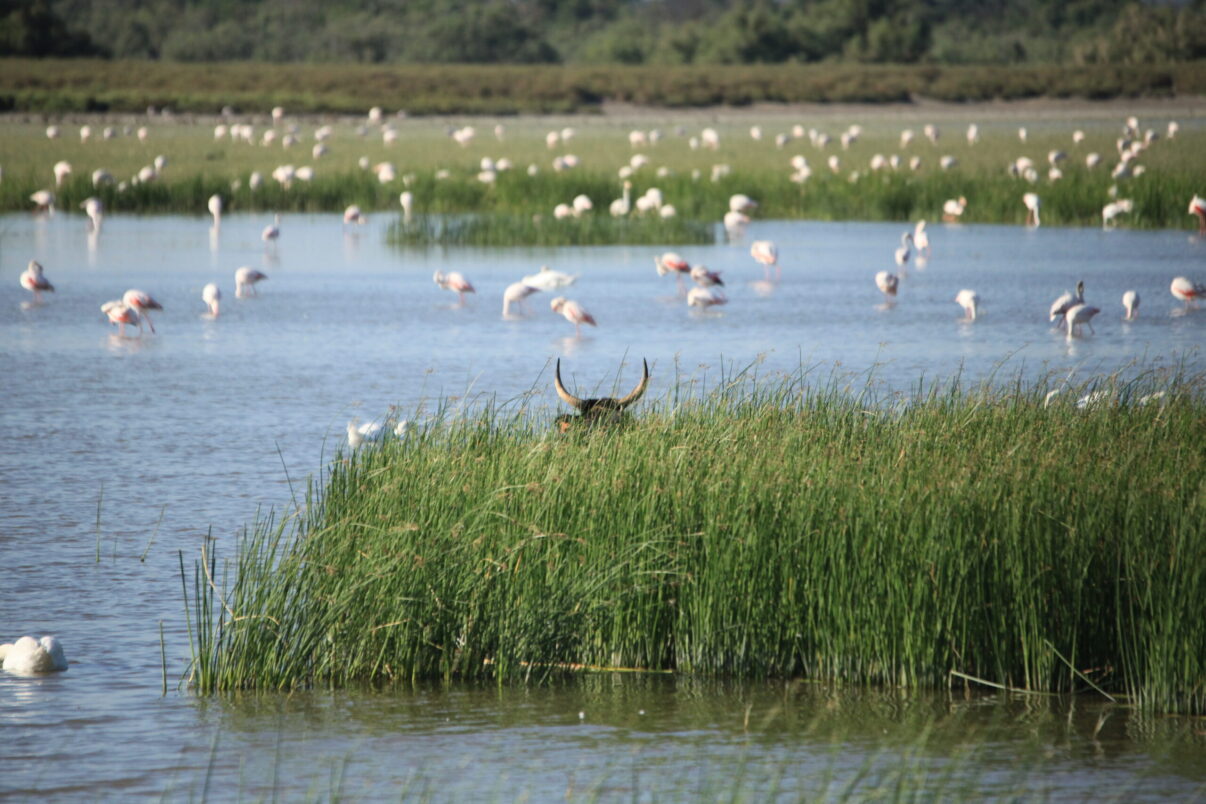
Wetlands on the edge
Coastal wetlands are hugely valuable ecosystems – they not only support a diverse range of wildlife, but also help to filter water, absorb and store significant amounts of atmospheric carbon, and protect communities from flooding and storm surges. Yet half of all such wetlands disappeared over the course of the twentieth century, squeezed out of existence by human land use on one side, and sea level rise on the other.
The decline of coastal wetlands in the Mediterranean has followed this trend. Between 1960 and 1990 they halved in size, as the pressures of urbanisation, tourism, agriculture and industry took their toll, and coastlines retreated. Climate change continues to disrupt water balances, leaving remaining wetland ecosystems increasingly degraded and fragile.
Learning by doing
The goal of private French foundation Tour du Valat , which began life in 1954, is to conserve Mediterranean wetlands by better understanding how they function and improving their management. The unique 2600-hectare Tour du Valat Estate , which is located in the vast Camargue wetland on France’s Mediterranean coast, acts as the foundation’s testing ground. Here it carries out various socio-economic, cultural and scientific activities, refining management of the site to maximise its value to both nature and people, and enabling the foundation to advocate for and advise on wetland conservation. Various habitats within the estate have been restored, as have natural processes such as flooding and natural grazing .
The Tour du Valat Estate has just become the latest member of Rewilding Europe’s European Rewilding Network (ERN) . With many other members involved in wetland rewilding and management, the initiative’s inclusion will strengthen the network’s collective expertise and help the foundation as it continues to rewild the estate.
“We are thrilled to be joining the ERN because the experience and knowledge of other members will help us to advance the recovery of nature on the estate,” says Arnaud Béchet, a Research Director in Ecology at Tour du Valat. “We believe nature recovery is a fantastic opportunity to bolster the socio-economic resilience of an area like the Camargue, which is facing unprecedented global pressures, such as climate change and urbanisation.”
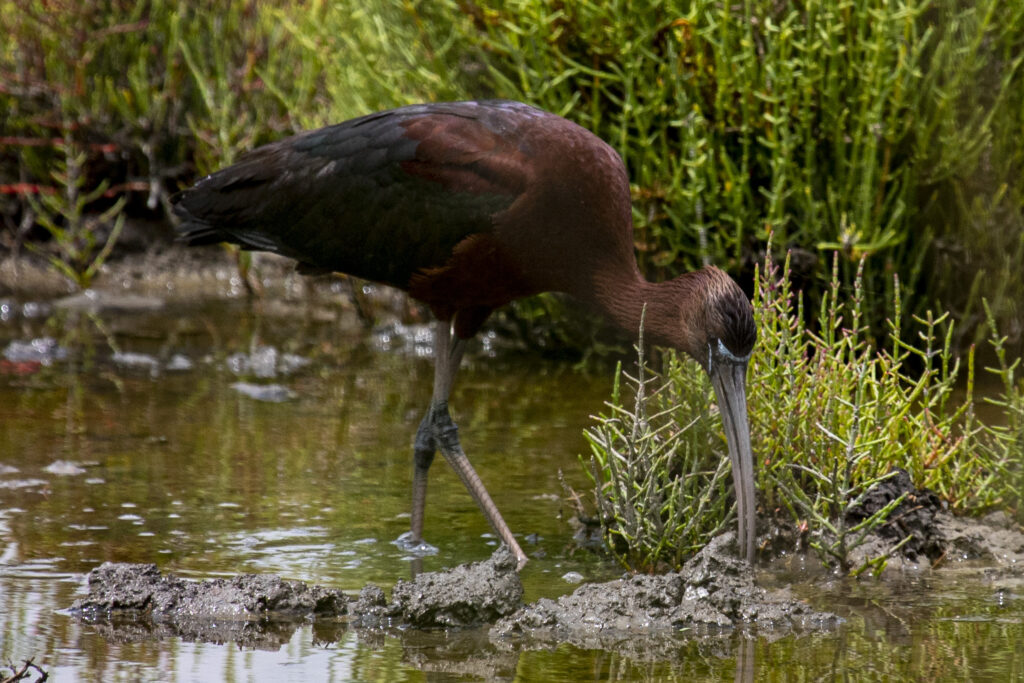
Unique biodiversity
The Tour du Valat Estate covers a total area of 2649 hectares in two different areas of the Camargue. The main area, which extends over more than 2500 hectares, is located on an old arm of the River Rhone (this is known as the Tour du Valat Estate). Of this, 1845 hectares is listed as a regional nature reserve, which is located inside a RAMSAR site, a Natura 2000 area, a Natural Regional Park, and a Biosphere Reserve.
Natural habitats on the estate are typical of the Camargue, including temporary marshes and fossil dunes (hardened sand dunes shaped by the wind), as well as large expanses of sansouire (saltmarsh). These habitats are home to an incredibly diverse flora and fauna, including 590 plant species, over 300 bird species, and more than 1600 invertebrates. These all depend on a complex web of interactions which have evolved to cope with salinity, winter floods, and summer droughts.
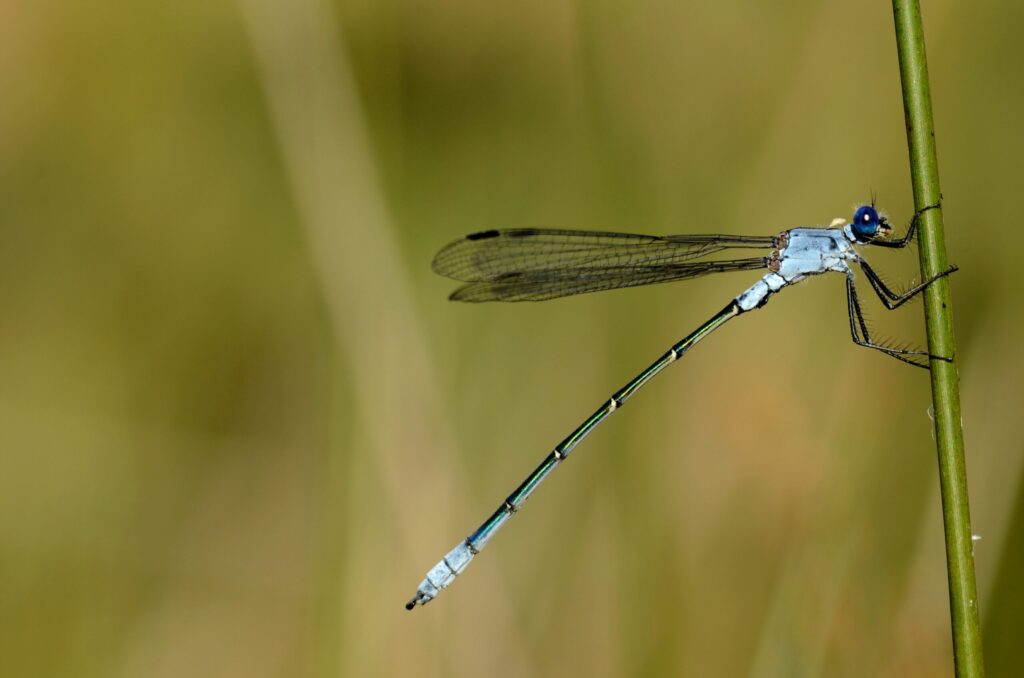

Rewilding efforts
Ongoing work is being carried out to restore a more natural flow of water on the Tour du Valat Estate. Increased flooding in the winter is helping the site to host large waterbird populations, which have made the Camargue famous for birdwatching. Areas of reedbed have been restored to support the Eurasian bittern . On higher ground, areas of dry grassland have been restored, leading to regular breeding of the collared pratincole and the return of the little bustard .
Traditional Camargue horses and bulls are raised on the estate. These large grazers are key elements of the Camargue’s cultural identity, but they also play an essential ecological role by enhancing biodiversity through their low-intensity grazing.
In 2021, the International Union for Conservation of Nature (IUCN) admitted the Tour du Valat Estate to the IUCN Green List of Protected and Conserved Areas – the global standard for recognising the best-managed sites on the planet.
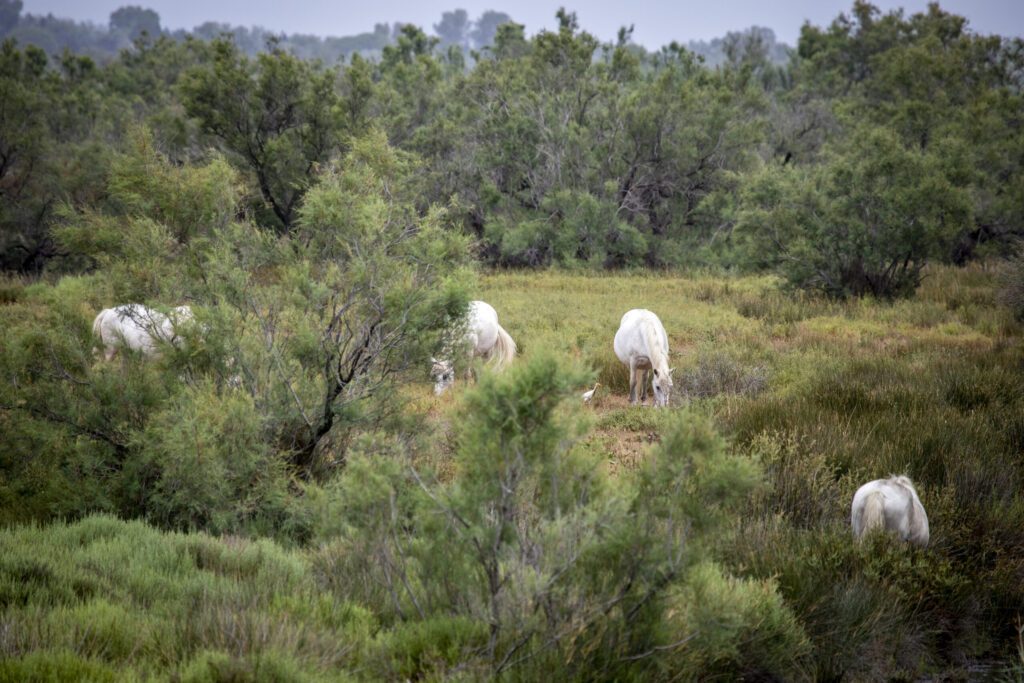
Wetlands-based climate change adaptation
Scaling up nature recovery is our best chance of successfully mitigating the worst impacts of climate change . Investing in nature-based solutions – including the smarter management of wetland and agricultural land – has the potential to deliver 30% of the climate solutions we need by 2030 .
The management of wetlands and coastal ecosystems also needs to adapt to the new realities of a hotter planet, with more climate extremes, particularly in the Mediterranean. The iconic landscape of the Camargue, for example, is threatened by decreasing freshwater input from the Rhone, caused by hotter summers and disappearing alpine glaciers, as well as sea level rise. Rewilding gives nature more space to adjust, which in turn safeguards the benefits that nature provides to people.
By pioneering science-based interventions, showcasing solutions, and delivering powerful advocacy, the Tour du Valat Estate is making the case for the kind of investment and action needed to scale up rewilding, which can deliver game-changing benefits to people and nature. Rewilding Europe is proud to welcome the estate to the ERN as an inspirational example of rewilding in action.
A platform for exchange
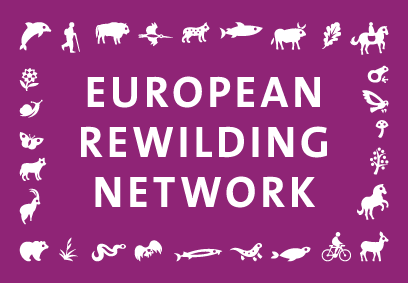
Founded by Rewilding Europe in 2013, the aim of the ERN is to enhance the efforts of each member by facilitating the exchange of skills, insight and experience. Members meet regularly, usually via webinar, while nature-based businesses can also apply to Rewilding Europe Capital , Rewilding Europe’s enterprise loan facility.
Rewilding Europe extends a warm welcome to all European rewilding initiatives that focus on practical, result-oriented rewilding and encourages them to apply for ERN membership .
Want to know more?
• Tour du Valat
Related stories
Cousseau dunes and wetlands initiative joins the european rewilding network, dutch natural grazing initiative joins european rewilding network, the european rewilding network welcomes the uk’s largest coastal wetland creation project.
- Subscribe to our newsletter:
- Comments This field is for validation purposes and should be left unchanged.

Tour du Valat Research institute for conservation of Mediterranean wetlands
Tour du Valat, a research institute for the conservation of Mediterranean wetlands, conducts numerous activities with partners to the north and south of the Mediterranean basin.
Affiliated Marine and Wind Energy Environmental Documents
- News & Events
- Eastern and Southern Africa
- Eastern Europe and Central Asia
- Mediterranean
- Mexico, Central America and the Caribbean
- North America
- South America
- West and Central Africa
- IUCN Academy
- IUCN Contributions for Nature
- IUCN Library
- IUCN Red List of Threatened Species TM
- IUCN Green List of Protected and Conserved Areas
- IUCN World Heritage Outlook
- IUCN Leaders Forum
- Protected Planet
- Union Portal (login required)
- IUCN Engage (login required)
- Commission portal (login required)
Data, analysis, convening and action.
- Open Project Portal
- SCIENCE-LED APPROACH
- INFORMING POLICY
- SUPPORTING CONSERVATION ACTION
- GEF AND GCF IMPLEMENTATION
- IUCN CONVENING
- IUCN ACADEMY
The world’s largest and most diverse environmental network.
CORE COMPONENTS
- Expert Commissions
- Secretariat and Director General
- IUCN Council

- IUCN WORLD CONSERVATION CONGRESS
- REGIONAL CONSERVATION FORA
- CONTRIBUTIONS FOR NATURE
- IUCN ENGAGE (LOGIN REQUIRED)
IUCN tools, publications and other resources.
Get involved
Tour du Valat
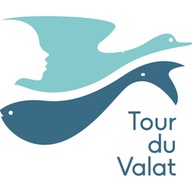
Member at a glance

Sign up for an IUCN newsletter
- Navigation access
- Content access
- Footer access
- Adopt a flamingo
- Documentary portal
- Our actions
- Nesting boxes and roosts to make the agricultural landscape more hospitable to birds and bats
Fiches_Nichoirs_Camargue_2024_Chiroptères
- A- Switch to smaller font size
- A+ Switch to biggest font size
Please enable Javascript to view our site properly.
Wetlands for a sustainable Mediterranean region
- Medwet on Facebook
- Medwet on Twitter
- Medwet on LinkedIn
- Medwet on Vimeo
- Medwet on Instagram
PUBLICATIONS BY ORGANIZATION: Tour du Valat
- Biodiversity – Biodiversité
- Climate Change
- Coastal wetlands
- Eco-grazing
- Ecosystem services
- Inventories – Inventaires
- Marine turtles
- National strategy
- Nature-Based Solutions
- Observatories – Observatoires
- Water – Eau
- World Wetlands Day
- الأراضي الرطبة
- تغير المناخ
- biodiversity
- climate change
- Living Mediterranean Report
- Mediterranean Waterbird Network (MWN)
- Ministère de la Transition écologique (France)
- MWO – OZHM
- Off Your Map
- Ramsar Convention
- Ramsar France
- Tour du Valat
- UN Environment/MAP
- Wetland-based Solutions project
- Wetlands International
- WWT Consulting

Eco-grazing and vegetation restoration in Mediterranean wetlands
Eco-grazing is a powerful means of vegetation management, commonly used in wetlands. By controlling the growth of numerous species and limiting the establishment and colonization of other vegetation, grazing modifies plant hierarchies and can contribute to maintaining or increasing biodiversity. It is therefore a tool that is commonly used in reserves and sites where biodiversity depends on the maintenance of herbaceous environments. This new book, Eco-grazing and vegetation restoration in […]

Restoring Mediterranean Wetlands: The new policymaker’s playbook for sustainable management and ecosystem restoration by 2030
This handbook has been prepared in the framework of the project “Strengthening the restoration of Mediterranean Wetlands for nature and people” funded by the MAVA Foundation. It has been coordinated by WWF Spain, MedWet and Tour du Valat in partnership with PIM Initiative and MEDSEA. The project is part of the Wetlands-Based Solutions initiative funded by the MAVA Foundation. Through better planning and understanding we can increase wetlands’ resilience and […]

Technical reports of the Mediterranean Waterbird Network (MWN)
Since 2017, the Mediterranean Waterbird Network (MWN) has been exchanging with other Mediterranean countries, in addition to the five historical North African partners. Discussions with these new countries (France, Spain, Italy, Greece, Turkey, but also Portugal, Albania, Serbia, Montenegro, Northern Macedonia) have led to the development of a scientific poster to be presented at an international conference (EBBC, 2019), a scientific paper to be reviewed in a scientific journal […]

Nature-based solutions in the Camargue’s former saltworks
In order to mitigate the consequences of climate change that are predicted to increase in the 21th century, Nature-Based Solutions appear more and more as an efficient answer on a long-term basis, economical for public finances, and positive for natural ecosystems. This leaflet introduces to this concept and presents the way it is implemented in the Lagoons and Marshes on the former Camargue Saltworks by the managers of the […]

Mediterranean Wetlands Outlook 2: Solutions for sustainable Mediterranean Wetlands – 2018
The Mediterranean Wetlands Observatory, functioning under the umbrella of Tour du Valat and the Mediterranean Wetlands Initiative MedWet, has just published the new report Mediterranean Wetlands Outlook 2: Solutions for sustainable Mediterranean wetlands (MWO2). The MWO2 updates the situation for Mediterranean wetlands since 2012, the year of publication of the MWO1, which was the first regional indicator-based assessment of the status of wetlands and the challenges that they face. […]

First thematic report- Biodiversity: status and trends of species in Mediterranean wetlands
“Biodiversity: status and trends of species in Mediterranean wetlands” is the first thematic report published by the Mediterranean Wetlands Observatory (MWO).
This issue is dedicated to biodiversity and provides in-depth knowledge on the conservation status of species dependent on wetlands in the Mediterranean basin, the threats, the consequences of their depletion on human well-being, and solutions to reverse the negative trends.

IMAGES
COMMENTS
La Tour du Valat est un institut qui mène des activités de conservation des zones humides méditerranéennes depuis 1954. Découvrez ses projets, publications, événements et actualités en France et en Méditerranée.
Tour du Valat is a French non-profit organization that conducts research and conservation projects in the Mediterranean basin. Learn about their activities, publications, events, and how to support their work.
Tour du Valat is a non-profit organisation that studies and protects Mediterranean wetlands, especially in the Camargue region. It offers occasional public events, guided tours, and free-access trails on its estate and other sites.
The Tour du Valat, which is located in the heart of the Camargue, is a private research institute with the legal status of a non-profit foundation that works in the public interest. The Estate, which includes all the natural habitats representative of the fluviolacustrine Camargue, covers 2649 hectares, 1845 of which are in a regional nature ...
Tour du Valat. Le Domaine de la Tour du Valat est un centre de recherche pour la conservation des zones humides méditerranéennes fondé par Luc Hoffmann en 1954. Il occupe une surface d'environ 2 600 hectares. Une partie du site sur 1 844 hectares a été classée en 2008 en réserve naturelle régionale de la région Provence-Alpes-Côte d ...
The Tour du Valat. On this page, you can learn more about the Tour du Valat's fascinating history, our values, missions, governance, partners and sponsors, as well as the practical information needed to pay us a visit: The Tour du Valat's history and values. The life of Luc Hoffmann, who founded the Tour du Valat.
The Tour du Valat. in the Mediterranean. Tour du Valat, a research institute for the conservation of Mediterranean wetlands, conducts numerous activities with partners to the north and south of the Mediterranean basin. This interactive map gives you access to all of our projects and actions in each country.
The Tour du Valat Estate covers a total area of 2649 ha in two different geographical areas located in the Camargue: - The Tour du Valat Estate itself, near the village of Le Sambuc (city of Arles, Bouches-du-Rhône), covers 2548 ha, including 1845 ha listed as a regional nature reserve, 715 ha of agricultural parcels and buildings, the Verdier marshes (find out more), the Petit Badon Estate ...
The Tour du Valat Estate covers a total area of 2,918 ha in two different geographical areas located in the Camargue: The Tour du Valat Estate itself, near the village of Le Sambuc (city of Arles, Bouches-du-Rhône), covers 2,817 ha, including 1,845 ha listed as a regional nature reserve, 1,073 ha of agricultural parcels and buildings, the Verdier marshes, the Petit Badon Estate, and the ...
23.07.2020 - Christophe Germain. The Flamingo Atlas is a collaborative platform for information exchange and transfer about the flamingo population of the Mediterranean and West Africa. Flamingos live in wetlands that are threatened by industrial, agricultural and tourist development. They are a flagship species for the conservation of these ...
Tour du Valat. Conservation de la nature Gestion des Systèmes Municipaux de Déchets Solides. Une gestion efficace des systèmes de gestion des déchets municipaux nécessite une bonne compréhension des facteurs d'élimination des déchets, des quantités de déchets générés, des coûts économiques des opérations du système et des ...
Tour du Valat is a research institute for the conservation of Mediterranean wetlands which was founded more than 50 years ago by Luc Hoffmann. It is located in the heart of the Camargue and extends over an area of 2 600 hectares. *For thousands of years, wetlands (lakes, ponds, lagoons, gravel pits, estuaries, peat bogs, alluvial valleys, pools, marshes,…
The Tour du Valat Biological Station was created in 1954 by Luc Hoffmann. An independent organisation, the Tour du Valat was declared a non-profit foundation in 1976. Back to the list
The Tour du Valat Estate project aims at the conservation and management of temporary marshes, wetlands and dry grasslands in the heart of the Camargue. Tour du Valat estate is located on an old arm of the Rhone river with extensive pastures where Camargue horses (50) and bulls (400) are raised in an extensive way.
Tour du Valat | 5,872 followers on LinkedIn. « Mieux comprendre les zones humides pour mieux les gérer » | La Tour du Valat, située au cœur de la Camargue, est un Institut de recherche pour ...
From 2001 to 2005, Tour du Valat carried out an integrated research and conservation programme on temporary pools, targeting rare species (especially amphibious plants) and the impact of socio-economic factors. A second major component dealt with the management and conservation of selected sites.
The Tour du Valat Estate covers a total area of 2649 hectares in two different areas of the Camargue. The main area, which extends over more than 2500 hectares, is located on an old arm of the River Rhone (this is known as the Tour du Valat Estate). Of this, 1845 hectares is listed as a regional nature reserve, which is located inside a RAMSAR ...
Tour du Valat, Arles. 4,263 likes · 167 talking about this. Institut de recherche pour la conservation des zones humides méditerranéennes
Tour du Valat, a research institute for the conservation of Mediterranean wetlands, conducts numerous activities with partners to the north and south of the Mediterranean basin.
Headquarters Rue Mauverney 28 1196 Gland Switzerland. Follow Us. Crossroads Blog ©IUCN, International Union for Conservation of Nature and Natural Resources
News about Tour du Valat; Public events; First name * Last name * Country * City. Confidentialité * I accept that personal data is kept in order to receive news from the Tour du Valat. These can be deleted upon simple request. Website. Register. Show previous newsletters. News Archives. 2024; 2023; 2022; 2021; 2020; 2019; 2018; 2017; 2016 ...
2023. This handbook has been prepared in the framework of the project "Strengthening the restoration of Mediterranean Wetlands for nature and people" funded by the MAVA Foundation. It has been coordinated by WWF Spain, MedWet and Tour du Valat in partnership with PIM Initiative and MEDSEA. The project is part of the Wetlands-Based Solutions ...
Tour du Valat 🌱 (@tour_du_valat) • Instagram photos and videos. 1,937 Followers, 702 Following, 277 Posts - See Instagram photos and videos from Tour du Valat 🌱 (@tour_du_valat)